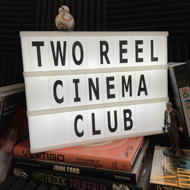We get down to business at the Two Reel Cinema Club this episode, as we watch the very entertaining new Canadian comedy-drama Blackberry, which explores the multi-billion-dollar early days of the smartphone, and compare it to Paul Thomas Anderson’s 2007 masterpiece There Will Be Blood. They’re two stories about big money, separated by a century, but with many touchstones in common. But which film had to recast a central character well into shooting? Which film has the most incredible soundtrack? And which film do we dub ‘Oppenheimer’s Little Brother’?
Plus we watch a 1930s James Whale classic on 16mm film, digitally deconstruct some Impressionist paintings, launch a series of original new websites, ask whether Michael Ironside’s sides are still made of iron, and demonstrate exactly what people mean by the phrase ‘when one door closes, another one opens’…
If you enjoyed the show, find us on social media:
Instagram: @tworeelcinemaclub
Contact us at [email protected]
Or come to our website, where we’ll be writing about the movies we cover in the show and a few more things besides: https://tworeelcinemaclub.com
